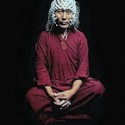Explore Articles Filed Under: Ayahuasca

Beware of any article published in the first issue of the first volume of a new scholarly journal. Scholars and researchers are not going to risk placing their breakthrough career-making articles in an untried journal that may, within a few issues, sink into oblivion. Rather, they often see the newly founded journal as a place to publish pieces that they had previously tossed into a drawer, in order to get the article out of the drawer and onto their curriculum vitae. I think this may be what happened with Benny Shanon’s article Biblical Entheogens: A Speculative Hypothesis, which appeared in issue one of volume one of a new journal called Time and Mind: The Journal of Archaeology, Consciousness, and Culture.

Psychonautic author Daniel Pinchbeck — who wrote, among other books, Breaking Open the Head: A Psychedelic Journey into the Heart of Contemporary Shamanism — holds an annual convocation in New York which he calls the Ayahuasca Monologues, attended by artists, authors, filmmakers, and New York glitterati generally. In response to the announcement of the second of these conferences, held in April 2008, on Pinchbeck’s web magazine Reality Sandwich, a woman I know only as Xanadu Xero posted a comment provocatively entitled Ayahuasca is the new absinthe! Visions are the new black!, which I here reproduce in its entirety.
There appears to be little reason to believe that ayahuasca is either addictive or dangerous in any conventional sense. A well-publicized psychiatric study of members of the União do Vegetal, an ayahuasca-using new religious movement that originated in Brazil, showed significant differences between long-term members of the UDV who consumed ayahuasca at least two times a month in religious rituals, compared with demographically matched controls who had never consumed ayahuasca. As we have discussed, personality testing instruments showed UDV members to be more reflective, rigid, loyal, stoic, slow-tempered, frugal, orderly, and persistent, and with higher scores on measures of social desirability and emotional maturity than the controls.
On June 24, 2008, the Peruvian National Institute of Culture resolved that indigenous ayahuasca rituals — “one of the fundamental pillars of the identity of Amazonian peoples” — are part of the national cultural heritage of Peru, and are to be protected, in order to ensure their cultural continuity. The National Institute of Culture is charged by statute with recording, publishing, and protecting the Peruvian national cultural heritage.

Substituting other plants for the ayahuasca vine and companion plants — chacruna, sameruca, chagroponga — is part of a quest for what are called ayahuasca analogues — duplications of the ayahuasca drink “compounded with the correct percentages of DMT and beta-carbolines,” as chemist Alexander Shulgin puts it, but using materials more readily available in North America. One of the most commonly used alternative sources of β-carbolines is the plant Peganum harmala, also called Syrian rue, which grows wild in the western states, and is available in South Asian and Middle Eastern groceries under the name esfand or harmal.
I have written previously on the legal status of ayahuasca in the United States. In response, I have received claims to the effect that, while possession or sale of DMT may be a felony, it is legal to possess plants containing DMT, such as chacruna. I have struggled to find the source of this contention — which has achieved the status of folklore — and I think I have found it.
One of the most striking features of Amazonian mestizo shamanism is the icaro, the magic song, whispered, whistled, and sung. The shaman uses icaros to call the spirits for healing, protection, or attack, and for many other purposes as well — to control the visions of another person who has drunk ayahuasca, work love magic, call the spirits of dead shamans, control the weather, ward off snakes, visit distant planets, work sorcery.

We have discussed the idea, widely held in the Upper Amazon, that human beings in general, and shamans in particular, have powerful urges to harm other humans, and that the difference between a healer and a sorcerer comes down to a matter of self-control. And on that there hangs a story.

Ayahuasca is made from the stem of the ayahuasca vine (Banisteriopsis caapi), almost always combined with the leaves of one or more of three compañeros, companion plants — the shrub chacruna (Psychotria viridis), the closely related shrub sameruca (Psychotria carthaginensis), or a vine variously called ocoyagé, chalipanga, chagraponga, and huambisa (Diplopterys cabrerana). It is in fact the companion plant that contains the potent hallucinogen dimethyltryptamine (DMT); but, while DMT is effective when administered parenterally, it is, when taken orally, inactivated by peripheral monoamine oxidase-A (MAO-A), an enzyme found in the lining of the stomach, whose function is precisely to oxidize molecules containing an NH2 amine group, like DMT.
There is a theme woven through the shamanisms of the Upper Amazon — that human beings in general, and shamans in particular, have powerful urges to harm other humans. The difference between a healer and a sorcerer is that the former is able to bring these urges under control, while the latter either cannot or does not want to. Thus, what distinguishes a healer from a sorcerer is self-control.

Discussing the article:
Hallucinogens in Africa